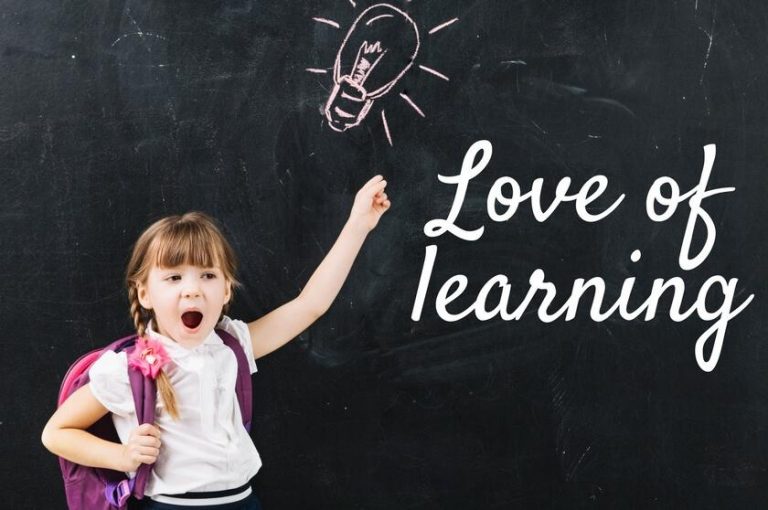Parenting(Age 5 to 8) | Academic | General | Parenting(Age 9 to 12) | Parenting(Age 13 to 16) | Dec 15, 2020
How to Get Your Child to Love Learning

Studying young minds, observing how they view the world, their power and abilities has shown that their learning has changed over time. Learning is a process where all your senses, beliefs and values get involved and brings about a potential change in the learner. Learning is an ongoing process which is natural and a part of life; that takes place from childhood to early adulthood and continues throughout your life.
The method of learning things may not always be the same. Learning can be diverse . There are different ways through which we can learn things and acquire knowledge. Let’s go through some of the possible means.
Different ways through which learning happens:
Behavioral scientists have talked about three possible ways through which we learn and have termed them; classical conditioning, operant conditioning, and observational learning.
Learning through classical conditioning
Through this process, a learner tries to learn by associating with events that happen around us. This learning is one of the fundamental ways through which people learn. Associating things with your surroundings triggers the learning process and develops interests in learning things. Parents and teachers can apply classical conditioning in the class/ home by creating a positive environment to help a child learn. To assist a child in overcoming anxiety or fear, an anxiety-provoking situation, like performing in front of a group, can be created to help the child learn new associations. Instead of feeling apprehensive and worried in these situations, the child will learn to stay relieved and at ease.
Learning through Operant conditioning
It is a process of learning that employs rewards and punishments. This method plays an important role in our everyday learning. For example, if your child is encouraged in learning something that is always followed by a reward, it would stimulate his learning process. As this process is followed by reward and desirable outcome, the action associated with is gets strengthened. On the other hand, if a child gets scolded and berated, his/her performances acts as a positive punishment making it obvious that the child will try hard to improve. It is proven that our actions on the environment and the consequences of that action make up an important part of the learning process.
Learning through observation
This learning happens by observing the behaviors of others and imitating those behaviors. It is a tested theory that children learn by observing and imitating adults. Hence, this method is most commonly used during childhood. Humans are capable of observational learning, hence shaping, modelling and watching related learning videos initiate learning interest within the child.
Urge to learn is something natural; children are born with an innate love for learning. We all want our children to embrace life, unearth their passions, cultivate their talents and pursue them as their career. This is all we, as parents, want for our children.
Thus, our role in their learning process is to observe how much they can learn on their own about how the world works. In this way, we will also be able to nurture their innate love of learning that is vital to the development of skills needed to lead successful lives. So, it is advisable to create a learning environment where children can develop their intrinsic curious minds.
Any student, whoever has acquired the basic aptitude and obtains the right motivation, can become a good receiver of knowledge. Learning should not be limited to the classroom. Classrooms should be just the primary source but intellectual, social and academic growth should extend outside the walls of the classroom – if you really want to develop the child’s desire and ability to learn.
Create an atmosphere for reading
Reading stimulates interest within the child to explore themselves, ignites their imagination and improves their communication and language skills. To cultivate love for reading, make your children become familiar with books. Often take them to the library or a bookstore. Help students see the broader aspect, the historical and political context related to the importance of reading to enhance their appreciation. Teach them reading strategies so that they develop the skills to read and cultivate an attitude.
Promote self learning
Learning is something that must be fun. Let the students take up a cool project or go for an adventure related to the topic that they have studied. It is your encouragement and motivation that will drive the children to develop an appreciation for learning. Help them to explain or teach others about what they have learned. Loving to learn is an effort which develops with time.
Encourage and implement different learning styles
Help the child to choose what all they could learn and not just something beneficial to pursue a career. Implement Visual learning style as a preference for seeing or observing things, including pictures, diagrams, demonstrations, displays, handouts, films, flip-charts, etc. Auditory learning style is also preferred for the transfer of information through listening: to the spoken word, of self or others, of sounds and noises. The Kinesthetic learning style is the other means which has the preference for physical experience – touching, feeling, holding, and doing practical hands on experiences. Some children also learn through the use of logic and reasoning. These types of learners are good at analyzing cause-and-effect relationships. Encourage critical thinking, including statistics, facts, and evidence.
There are several findings that people learn better when taught through their preferred learning style. These varying methods help you to retain the concentration and attention of the students for longer time and make learning enjoyable. It will develop internal motivation within the child to learn in the classroom, at home or wherever he/she may be. These strategies open up a better life and experiences for your child and this is the best thing you can do for your kid as a parent.
















Post a Comment: